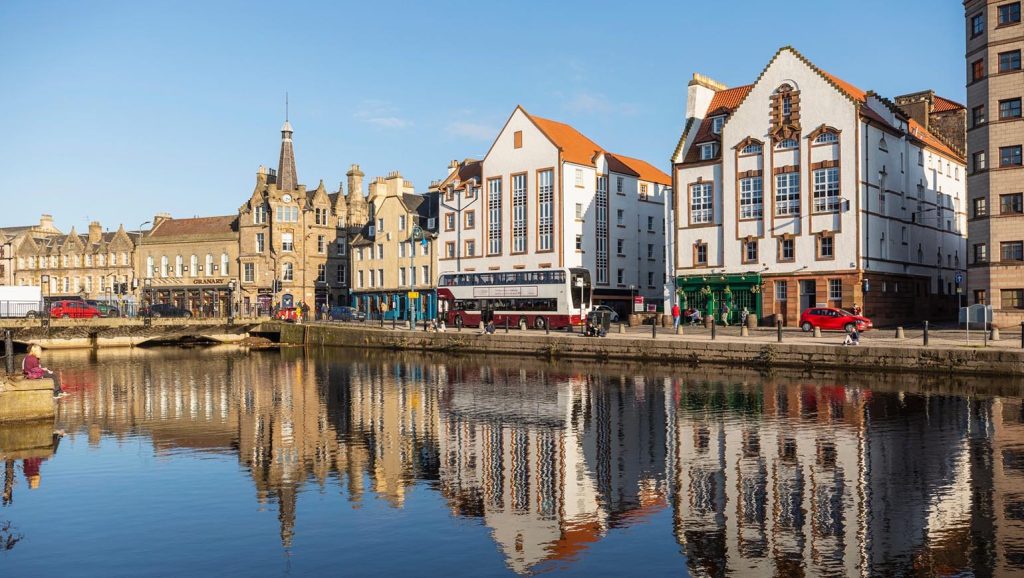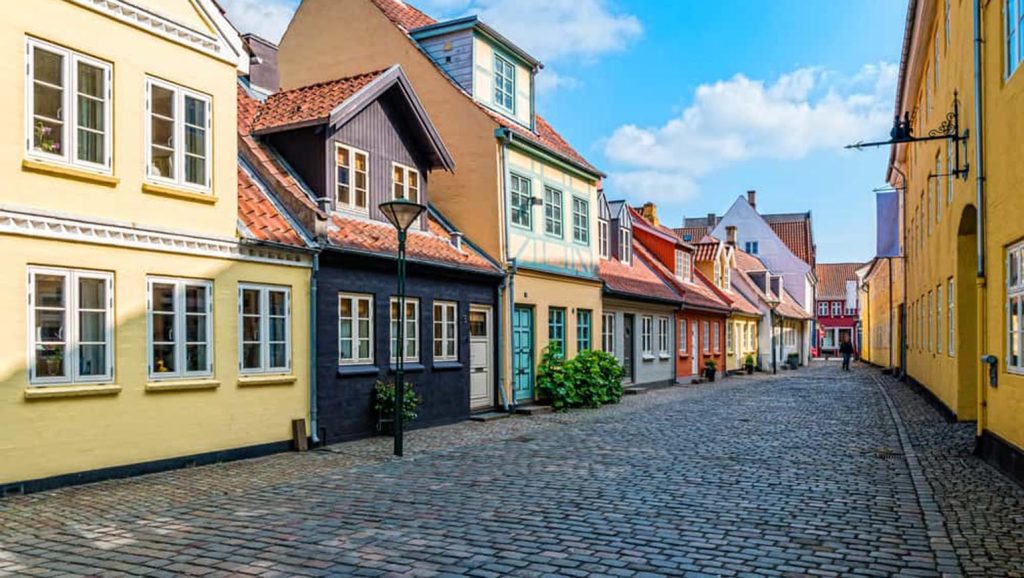Arrival and Unveiling the Jewellery Quarter’s Secrets
Touching down at Birmingham Airport, I could feel the anticipation building for a sojourn in a city steeped in industrial history and cultural vibrancy. The Jewellery Quarter, a hidden enclave celebrated for its historic charm and artisanal finesse, beckoned me first. Cobblestone streets and intricate jewelry shops created a picturesque backdrop, revealing a side of Birmingham often overlooked.
Book Your Trip: Logistical Tips and Tricks
Book Your Flight
Find a cheap flight by using OneTravel. It’s my favorite search engine because it searches websites and airlines around the globe so you always know no stone is being left unturned.
Book Your Accommodation
You can book your hostel with Expedia. If you want to stay somewhere other than a hostel, use Kiwi as it consistently returns the cheapest rates for guesthouses and hotels.
Ready to Book Your Trip?
Check out my resource page for the best companies to use when you travel. I list all the ones I use when I travel. They are the best in class and you can’t go wrong using them on your trip.
Location: Nestled northwest of the city center, the Jewellery Quarter is easily accessible by train or a swift taxi ride.
Transportation: Opting for a train from Birmingham Airport to Snow Hill Station, a brief walk brought me to the heart of the Jewellery Quarter.
Highlights:
Museum of the Jewellery Quarter: A Glittering Tribute to Artisanal Excellence
Nestled within the confines of a former jewelry factory, the Museum of the Jewellery Quarter stands as a beacon to Birmingham’s rich jewelry-making heritage. As I stepped through its doors, a palpable sense of history enveloped me. The craftsmanship on display, meticulously preserved within the museum’s walls, served as a living testament to the city’s artisanal roots.
The journey through the museum was a mesmerizing exploration of Birmingham’s role in shaping the world of jewelry. From the delicate filigree work to the robust craftsmanship of metalworkers, each exhibit unveiled the intricacies of the trade. The tools, some ancient and weathered, whispered stories of the skilled hands that had once wielded them in the pursuit of perfection.
One particularly captivating section of the museum allowed visitors to witness the jewelry-making process firsthand. The rhythmic symphony of hammers meeting metal and the delicate dance of artisans at their workstations transported me back to an era when each piece of jewelry was a labor of love and dedication.
What struck me most was the museum’s commitment to preserving not just the final products but also the atmosphere of the workshop itself. The preserved workbenches, tools hanging on hooks, and even the faint scent of metal lingered in the air, creating a truly immersive experience.
As I emerged from the Museum of the Jewellery Quarter, I carried with me not just a newfound appreciation for the artistry behind jewelry making but also a deep respect for the hands that had shaped Birmingham’s identity.
St. Paul’s Square: A Tranquil Oasis in the Urban Tapestry
Stepping into St. Paul’s Square felt like entering a time capsule where the hustle of the Jewellery Quarter faded into the background, giving way to the serene charm of Georgian architecture and the inviting aroma of freshly brewed coffee.
Surrounded by elegant buildings that whispered tales of a bygone era, St. Paul’s Square offered a welcome respite from the fast-paced exploration of Birmingham’s industrial past. The cobbled streets beneath my feet echoed with the footsteps of history, and the carefully preserved facades of the buildings transported me back to a time when Birmingham was forging its identity.
The square’s focal point, the majestic St. Paul’s Church, stood as a silent witness to centuries of change. Its timeless architecture, adorned with intricate details, provided a stunning backdrop for contemplation. I found myself drawn to a bench beneath the welcoming shade of a tree, where I sat, absorbing the historical ambiance and sipping on a cup of locally brewed coffee.
What struck me most about St. Paul’s Square was the seamless blend of history and modernity. The presence of cozy cafes, tucked between centuries-old buildings, added a contemporary touch to the surroundings. It was a place where the past and present coexisted harmoniously, inviting visitors to linger and savor the unique atmosphere.
As I departed from St. Paul’s Square, I couldn’t help but marvel at how this tranquil oasis stood as a testament to Birmingham’s ability to preserve its heritage while embracing the evolution of time.
Pen Museum: Scribbling Through Birmingham’s Industrial Narrative
Nestled in unassuming quarters, the Pen Museum unfolded as a hidden gem, revealing the fascinating history of Birmingham’s pen trade. As I entered, the modest exterior belied the treasure trove of insights that awaited within.
The Pen Museum served as a captivating journey into a niche aspect of Birmingham’s industrial past. Interactive exhibits unfolded the evolution of pen manufacturing, from quills and nibs to the advent of mass production. Each display showcased the craftsmanship and innovation that had once fueled an industry now overshadowed by modern technology.
One of the museum’s highlights was the opportunity to try my hand at traditional penmanship. Seated at an antique desk with inkwell and quill in hand, I experienced the tactile connection to a bygone era. The simplicity of the act — dipping the pen into ink and creating fluid strokes on paper — brought to life the manual precision required in the early days of pen manufacturing.
The museum’s collection of vintage pens, some with ornate designs and others bearing the wear and tear of time, provided a tangible link to Birmingham’s industrial prowess. Exhibits detailing the lives of the men, women, and children who toiled in pen factories added a poignant dimension to the narrative.
While the Pen Museum might be considered a niche attraction, it serves as a vital storyteller, unraveling a chapter of Birmingham’s history that might otherwise fade into obscurity. It stands as a reminder that even the seemingly ordinary tools we take for granted have a rich and compelling story to tell.
As I left the Pen Museum, I couldn’t help but appreciate how this unassuming space had transformed the act of writing into a gateway to Birmingham’s lesser-known industrial past. It was a testament to the city’s ability to turn the ordinary into the extraordinary, one pen stroke at a time.
Personal Reflections:
The Jewellery Quarter is a haven for history enthusiasts and those seeking a more intimate glimpse into Birmingham’s past. While the dining options were somewhat limited, the authenticity of the surroundings compensated for this. The museums were well-curated, offering a deep dive into the city’s artisanal heritage.

Cultural Immersion at Birmingham Museum and Art Gallery
Eager to delve into Birmingham’s cultural tapestry, I made my way to the Birmingham Museum and Art Gallery (BMAG). Situated in the city center, this cultural hub promised a diverse collection spanning ancient artifacts to contemporary art.
Location: Conveniently positioned in the city center, the museum is easily reachable by public transport or a leisurely walk.
Transportation: Opting for a pleasant stroll from my centrally located hotel, buses and trams were also readily available.
Highlights:
Pre-Raphaelite Brotherhood Collection: A Pinnacle of Artistic Mastery
Within the hallowed halls of the Birmingham Museum and Art Gallery (BMAG) lies a treasure trove that transports art enthusiasts into the world of the Pre-Raphaelite Brotherhood. This collection, touted as one of the world’s most extensive, showcases the genius of luminaries like Dante Gabriel Rossetti and William Holman Hunt.
As I entered the gallery, I was immediately enveloped in a kaleidoscope of vivid colors and intricate details. The Pre-Raphaelite painters, rebels against the artistic norms of their time, sought to revive the spirit of medieval art. The canvases spoke of a deep connection to nature, intense emotions, and a meticulous attention to detail that bordered on the obsessive.
Dante Gabriel Rossetti’s “Beata Beatrix” was a mesmerizing centerpiece, capturing the ethereal beauty of his muse, Elizabeth Siddal. The rich symbolism and lush colors created a visual symphony that resonated with the romantic ideals of the Brotherhood. Similarly, William Holman Hunt’s “The Awakening Conscience” depicted a narrative that went beyond the canvas, inviting viewers to ponder the moral complexities of Victorian society.
The curation of the collection allowed for a chronological journey through the evolution of Pre-Raphaelite art. The juxtaposition of early works with later, more experimental pieces revealed the growth and diversification of the Brotherhood’s style. The detailed descriptions accompanying each piece provided valuable context, making the collection accessible even to those less familiar with art history.
Leaving the Pre-Raphaelite Brotherhood Collection, I felt not only an aesthetic appreciation for the art but also a deeper understanding of the socio-cultural currents that shaped this movement. It was a testament to Birmingham’s commitment to preserving and showcasing artistic legacies that transcend time.
Ancient Egypt Gallery: Unveiling the Mysteries of Time
Stepping into the Ancient Egypt Gallery at the Birmingham Museum and Art Gallery was like embarking on a journey back through the annals of time. Mummies, artifacts, and interactive displays awaited, promising an educational and immersive experience that would unravel the mysteries of this ancient civilization.
The exhibit’s meticulous curation drew me into the heart of ancient Egyptian culture. The displays ranged from intricately decorated sarcophagi to everyday items used by the Egyptians, providing a holistic view of daily life along the Nile. The attention to detail in the replicas of tombs and temples allowed for a tactile exploration, making the history tangible.
One of the highlights was the mummy exhibit, where the meticulous process of mummification was unveiled. The juxtaposition of the physical remains with the vibrant depictions of the afterlife painted a vivid picture of the Egyptians’ beliefs and practices surrounding death.
Interactive displays engaged visitors in deciphering hieroglyphics and understanding the significance of various artifacts. This hands-on approach made the Ancient Egypt Gallery accessible to all ages, fostering a sense of wonder and curiosity about a civilization that has long captivated the human imagination.
Exiting the gallery, I marveled at how Birmingham had managed to encapsulate the grandeur and mystique of ancient Egypt within its museum walls. It was a testament to the city’s dedication to providing not just an exhibit but a voyage through time.
Gas Hall: Birmingham’s Canvas for Creative Innovation
As I stepped into Gas Hall, I found myself at the epicenter of Birmingham’s commitment to fostering creativity through a dynamic range of contemporary art. This versatile space, dedicated to hosting temporary exhibitions, showcased the city’s vibrant and ever-evolving cultural landscape.
The curated exhibitions in Gas Hall spanned a wide spectrum of artistic genres, from avant-garde installations to thought-provoking sculptures. Each visit to Gas Hall promised a new experience, as the exhibitions rotated, ensuring that the creative pulse of Birmingham beat in varied rhythms.
One particularly memorable exhibition featured a collection of contemporary paintings that challenged traditional notions of art. The bold use of color, innovative techniques, and the underlying narratives woven into each piece reflected the diversity and experimentation inherent in Birmingham’s art scene.
Gas Hall served as a meeting point for artists, art enthusiasts, and the curious passerby. The communal spaces surrounding the exhibitions buzzed with discussions, workshops, and events that brought art to life. It was evident that Birmingham saw Gas Hall not merely as a venue but as a canvas for the city’s artistic identity to unfold.
The commitment to hosting temporary exhibitions showcased Birmingham’s dedication to embracing the contemporary and pushing the boundaries of artistic expression. Gas Hall was not just a physical space; it was a testament to the city’s belief in the transformative power of art to shape, challenge, and inspire. As I left Gas Hall, I carried with me a sense of awe for Birmingham’s dynamic and ever-evolving creative spirit.
Personal Reflections:
The Birmingham Museum and Art Gallery is a must-visit for art and history enthusiasts. The occasional crowdedness was a minor inconvenience, but the overall quality of the displays overshadowed this. The diverse collections cater to a wide audience, and the rotating exhibitions keep the experience fresh.
Nature’s Respite at Cannon Hill Park

In search of a tranquil escape within the city, I ventured to Cannon Hill Park. This expansive green space promised a refreshing break from urban life, featuring lakes, gardens, and various recreational activities.
Location: Positioned southeast of the city center, Cannon Hill Park is easily reachable by bus or a leisurely stroll.
Transportation: Opting for the scenic route, a bus from the city center provided glimpses of Birmingham’s architecture along the way.
Highlights:
- Cannon Hill Park Lakes: Serene lakes set the stage for a leisurely boat ride or a quiet stroll. The surrounding greenery and wildlife created a peaceful ambiance.
- Mac Birmingham: Nestled within the park, the Midlands Arts Centre (Mac Birmingham) served as a hub for creativity. Galleries, performances, and diverse cultural offerings awaited exploration.
- Swan Pedal Boats: A unique experience within the park, swan-shaped pedal boats offered a charming and leisurely way to enjoy the water.
Personal Reflections:
Cannon Hill Park is a breath of fresh air in the heart of Birmingham. Ideal for families, couples, or solo travelers seeking tranquility, the variety of activities and natural beauty were standout features. The weather-dependent nature of some outdoor activities was the only drawback.
Top Recommendations:
- Cadbury World: A Chocolate Lover’s Paradise
Location: Bournville, approximately 4 miles south of the city center.
Transportation: Easily accessible by train or bus.
Highlights: Cadbury World promises a delectable journey through chocolate history, complete with interactive exhibits and, of course, tastings. - Library of Birmingham: Modernity Amidst Tradition
Location: Centrally located in the city, near Centenary Square.
Transportation: A short walk from Birmingham New Street Station.
Highlights: The Library of Birmingham’s modern architecture and panoramic views from the rooftop terrace make it a must-visit. - Peaky Blinders Tour: A Glimpse into Cinematic History
Location: Various locations in and around Birmingham.
Transportation: Guided tours available, or explore independently.
Highlights: For fans of the TV series “Peaky Blinders,” exploring filming locations and delving into the city’s industrial revolution history is a captivating experience.
Personal Recommendations:
- Cadbury World: A Sweet Extravaganza
Experience: Cadbury World is a delightful excursion for chocolate enthusiasts. The interactive exhibits, chocolate-making demonstrations, and the 4D cinema make it a sweet adventure. Be prepared for crowds, especially during weekends. - Library of Birmingham: Architectural Elegance
Experience: The Library of Birmingham is a modern marvel, offering diverse collections and a serene escape in the city center. The occasional crowdedness does little to diminish the overall experience. - Peaky Blinders Tour: A Cinematic Odyssey
Experience: Exploring the filming locations of “Peaky Blinders” provides a unique perspective on Birmingham’s history. While some locations may be less impressive in real life than on screen, the tour offers a fascinating glimpse into the city’s past.
Birmingham, with its amalgamation of history, culture, and green spaces, unfolded as a captivating destination. The Jewellery Quarter, Birmingham Museum and Art Gallery, and Cannon Hill Park offered diverse experiences, revealing the city’s multifaceted character. Additionally, the recommended spots—Cadbury World, Library of Birmingham, and the Peaky Blinders Tour—added extra layers to my exploration, making my visit truly unforgettable. Departing from Birmingham, I carried not only memories of vibrant attractions but also a heightened appreciation for the heart of England’s cultural and industrial heritage.






